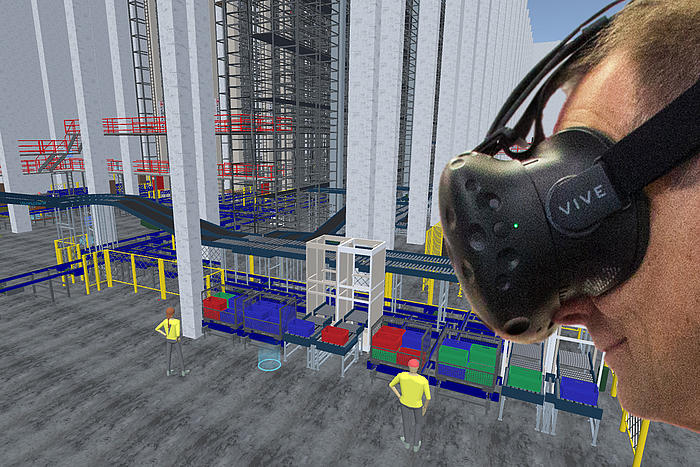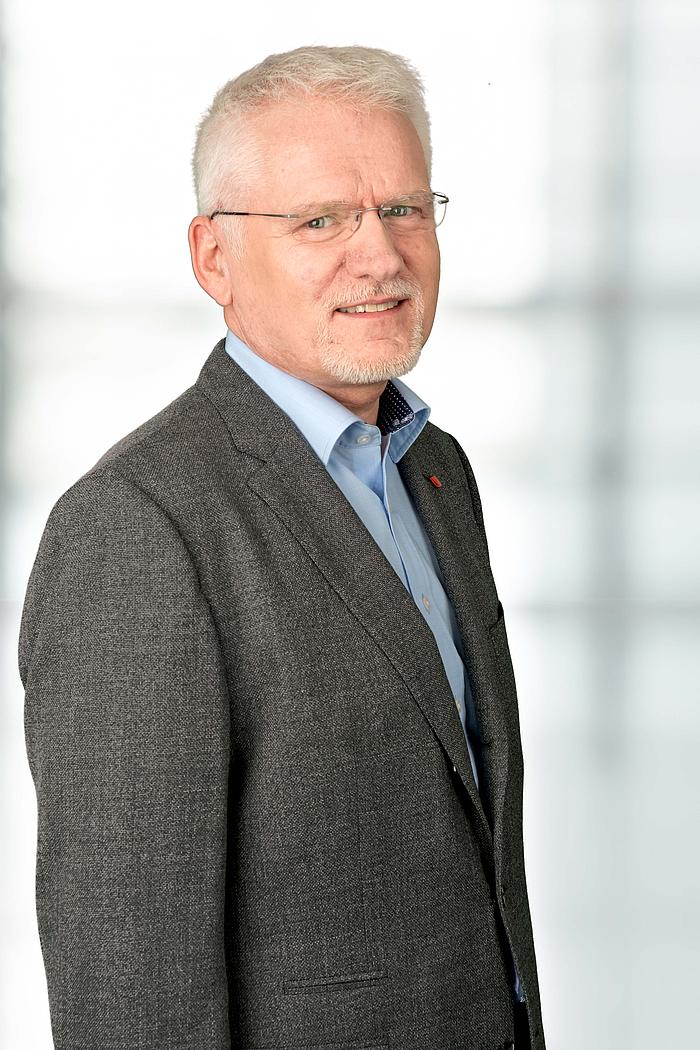Mr Mix, virtual imaging of logistics concepts is currently on everyone's mind. What possibilities does virtual reality offer over and above classic 3D drawings for warehouse planning?
First of all, the customer can imagine the logistics system much better because he is in his new warehouse and is not looking at it from the outside. Proportions and distances can be captured so much more precisely. This form of illustration brings great added value, especially in the early planning phase. The creation of parts of the logistics system in different scenarios allows, for example, the three-dimensional rendition of different workstation variants. The scenarios can be set up and compared quickly. With a VR model of the entire system, planning errors can be more easily detected and corrected prior to project implementation.
How do the technical possibilities change your approach to warehouse planning?
Workshops with the customer are part of the planning phase in a Unitechnik project: The joint test of the planned structure via virtual reality enables a realistic simulation of work processes and the inclusion of subsequent workstation users. This opens up the possibility of individual adaptation in the context of the overall system, for example, reaching heights and widths.
Which planning steps must be completed to allow you to create a corresponding model?
The basis for the virtual reality model is a 3D CAD drawing of the system. From the beginning of the sales process, we plan the future logistics system in 3D. This CAD drawing is then matured in the course of the project and adapted to the needs of the customer. At any time, the current state of the CAD model can be imported into a game engine. This then enables virtual "immersion" in the 3D drawing. Furthermore, we can allow the customers to participate regularly in the current state of planning. The physical behavior of the objects (for example conveyor technology with pallets) and animations are implemented with the game engine. It is thus possible, for instance, to pick up products at an order picking workstation and place them in a customer container. However, this dynamization of the entire model only makes sense if the rough structure of the warehouse is established. However, the systematic observation of specific work areas can also be carried out separately.

